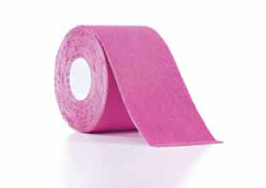
It seems almost too good to be true: Could something as simple as taping up your foot relieve the pain and discomfort of plantar fasciitis? The good news is that the answer is a definitive—and scientifically proven—yes. However, there are some caveats, and it is important to understand how taping works so you can utilize this treatment effectively.
If you are suffering from plantar fasciitis, you probably already know that this painful inflammatory condition is caused by the overuse of a thick band of tissues on the bottom of the foot. Plantar fasciitis commonly strikes middle-aged men, as well as those with foot arch problems, runners and individuals struggling with obesity. It is one of the most common foot problems seen by orthopedists and is often treated with physical therapy, including stretching, strengthening,ice/heat and anti-inflammatory medications (if your physician approves).
Taping involves wrapping the affected foot in a porous athletic tape, so that the plantar fascia ligament is supported and relieved of tension and pressure. The tape acts like a splint, allowing many people to resume normal activities without the telltale pain and stiffness in the bottom of the foot or heel. This is similar to what many athletes do as a preventative measure: taping their feet or ankles for extra support and protection.
While it is not a cure, most people find that the tape works well as a temporary or complementary solution, a modality that
- protects the ligament from further damage
- relieves tension
- reduces uncomfortable symptoms
- facilitates the therapeutic process
We can instruct you on the best way to apply the tape correctly and to make sure you are a good candidate for taping. For example, people with diabetes or peripheral vascular problems should not use tape. In addition, wearing the tape too often can lead to additional issues, such as skin irritation.
Taping is just one part of a larger therapeutic program. By following our instructions, you can enjoy pain relief and avoid future problems. You will soon be back on your feet—literally!
















